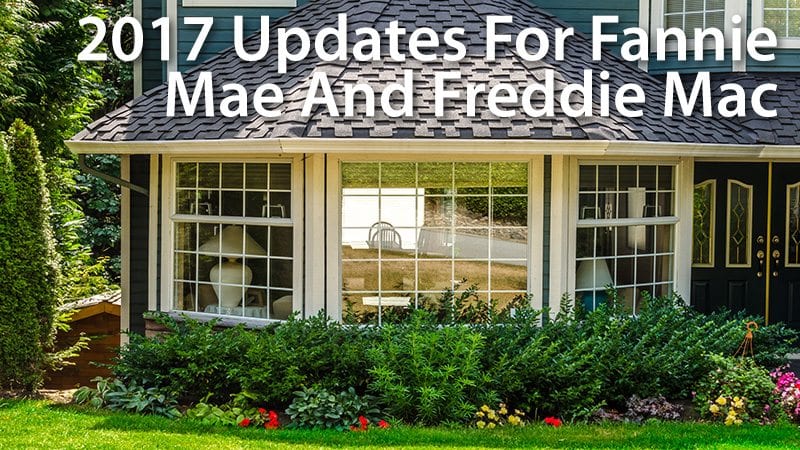
During late 2016 and early 2017, Fannie Mae and Freddie Mac made some changes to their processes. Since these two organizations back about half of all mortgages in the US, it’s a big deal. Here are someimportant things to know about conforming 2017 mortgages.
You May Not Need An Appraisal
For some refinances, you may notneed a property appraisal. Your lender may give youa PIW, or Property Inspection Waiver. To qualify, the loan must be underwritten electronically through Fannie Mae’s Desktop Underwriter (DU) system.
Fannie Mae possesses appraisal information for millions of properties. It uses this data to checkyour home value. If the software decides your homevalue is acceptable, you’re good to go. No appraisal needed. DU issues decisions within minutes, so you know right away if you qualify for a waiver.
Freddie Mac has a similar program called Home Value Explorer. It’s available for refinance loans underwritten by its Loan Prospector (LP) program.
Loan Limits Are Higher
More homebuyers can get 2017 mortgages without paying higher jumbo interest rates. Because of rising property values,the Federal Housing Finance Agency (FHFA) raised standard conforming loan limits from $417,000 to $424,199.
This is the first increasein a decade.
The standard loan limit applies to most of the US. However, in designated “high cost” areas, the FHFA set limits at 115 percent of the local median home value. That maxes out at 150 percent of the standard limit, or $636,150.
Homes In Wetlands May Not Qualify
Freddie Mac made this change effective December 2016, so 2017 mortgages won’t be approved if coastal tideland, wetlands or setback laws apply. For instance, if by law, you would not be allowed to rebuild a damaged or destroyed home, you can’t finance your property with aFreddie Mac loan.
Fannie Mae’s eligibility guidelines don’t specifically exclude wetlands, butadditional restrictions and processes apply to “environmentally sensitive” areas.
Solar Panels Get Special Treatment
Starting in March 2017, Freddie Mac mortgage guidelines will be kinder to homes with solar panels, whether owned by the borrower or leased from a third party.
Its guidelines are being updated to allow underwriters to exclude solar panel lease payments from applicants’ debt-to-income ratios. New updateswill indicate how the lease must be structured to qualify.
HARP Extended And Replaced In 2017
The HARP program was created to allow eligible borrowers with Fannie Mae or Freddie Mac loans to refinance, even if their loan balance exceeds their property value.Those eligible for the Home Affordable Refinance Program (HARP) have until September 2017 to complete it before the program terminates.
However, in October 2017, HARP will be replaced by a high loan-to-value refinance program. This option has fewer restrictions than HARP. For example, the old cut off date (June 1, 2009) won’t apply.
This combination ofHARP ineligibility and negative equity might be the reason that nearly one-fourth of mortgage borrowers are still paying five percent or higher, according to CoreLogic. 2017 mortgages could offer sweet relief to these homeowners.
DU 10.0 May Cut Processing Time And Costs
Fannie Mae’s latest edition of its Desktop Underwriter software features a validation service for assets, employment and income. Lenders can opt into DU Validation Service and automatically verify yourapplication information.
This may allow them to close your purchase or refinance mortgage faster. And hopefully, at a lower cost to you.
